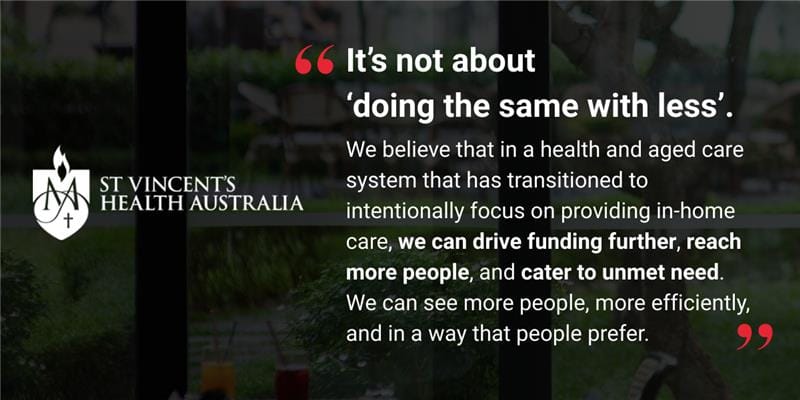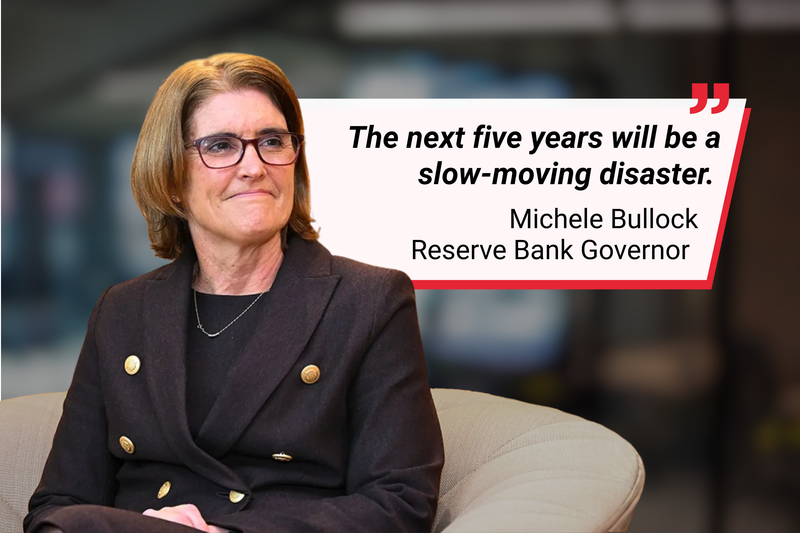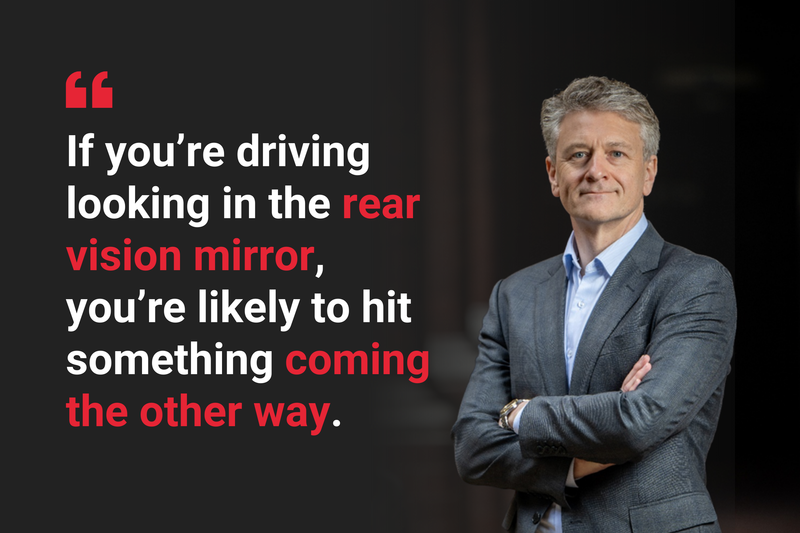Is this the future of health and aged care in Australia?
Over the next 12-18 months, St Vincent’s will start rolling out a central ‘command centre’ to support 24/7 virtual observation, using wearables and remote monitoring to track patient data and intervene earlier.

If you want a glimpse of Australia’s health and aged care future, St Vincent’s just handed it to us.
In a sweeping announcement this week, Australia’s largest Not For Profit health and aged care provider committed to delivering half of all its care in the home or virtually by 2030.
With around two million patients and resident interactions each year across its 10 private hospitals and 25 aged care facilities in Queensland, NSW and Victoria, this represents a whole-of-system pivot for the organisation.
With plans for hospital-level care, remote monitoring, virtual wards, clinicians in your lounge room instead of your local ED, St Vincent’s CEO Chris Blake (pictured top) calls it “building Australia’s largest virtual and home care system”. And unlike most strategy documents, this one comes with a countdown: five years.
It’s a bold move, but it’s not hard to see why.
As we’ve reported, hospitals and aged care are already buckling under the weight of demand. Every State Premier is insisting someone else should pay. Older people are paying the price – waiting in ED, stranded in wards, or stuck in systems that can’t keep up.
We’ve said it before: bed ‘block’ isn’t a beds problem; it’s an options problem.
St Vincent’s is betting on something different: care that follows the person, not their address.
Over the next 12-18 months, it will start rolling out a central ‘command centre’ to support 24/7 virtual observation, using wearables and remote monitoring to track patient data and intervene earlier.

It’s prevention, early intervention and home-first care – not as a slogan, but as a real foundation.
And it lands squarely inside the remit of Plan T – the sector-led transformation agenda that says waiting for Government to redesign the system is a dead end.

St Vincent’s is simply doing what Plan T argues every provider must: identify solutions for the future and force policy to follow.
It also intersects directly with the Support at Home shake-up. If older Australians want to stay home – and the data says they do – the system has to meet them there.
So the bigger question becomes this:
Is this where Australia’s health and aged care system is heading – and if so, who’s ready to make the jump?
St Vincent’s has mapped out the end point.
The rest of the sector now has to decide whether to join them on the journey – or be left reacting to a future someone else is already building.






